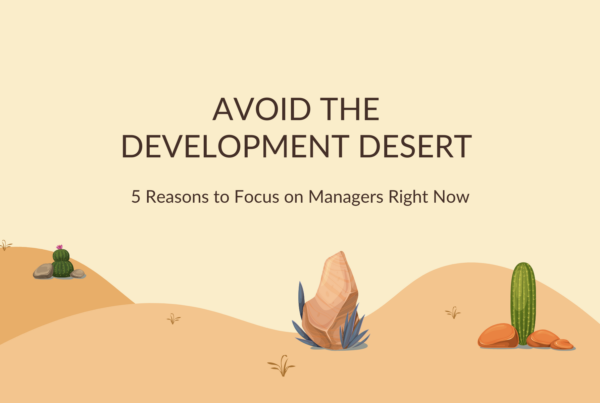The ability to think strategically is one of the most important leadership traits you can have. It also makes you a highly effective leader. A 2013 Management Research Group (MRG) study found that strategic thinking was the most important leadership quality to perceptions of “success” and “effectiveness” in the workplace — twice as important as communication. In other words, employees value leaders who are not just focused on solving today’s problems but who are looking to the future. They are planning ahead and figuring out what they need to do today, tomorrow and over the coming years to get there.
It turns out strategic thinking is also a highly coveted skill by employees. In fact, it’s the third most requested focus area among nearly 10,000 participants in Everwise’s mentoring program. That makes sense. After all, Millennials tend to prioritize personal growth, and managers require new skills, such as strategic over tactical thinking, coaching rather than project managing, communicating to all levels of the organization, and prioritization. Creating a development program that helps talent grow as leaders within the company is more important than ever.
Develop strategic thinking skills
Strategic thinking is a skill and as with any skill, it is possible to build and practice it on the job over time. Given strategic thinking happens every single day, there are plenty of opportunities to help your employees succeed and improve their capabilities.
Practice problem solving at all levels. Don’t just leave it to management. There are challenges that crop up at every stage of a project. Be sure to ask employees, particularly those who are eager to become managers, to consider an issue and come up with solutions that address the immediate problem, while considering the future state as well.
Provide more feedback. It can be difficult to move from tactical to strategic thinking. Giving team members constructive feedback along the way will help them understand not only what is or is not working but also give them a chance to put those insights back into action right away.
Create team projects. By pairing team members together on projects, there are more opportunities for employees to learn from one another and to have more social, collaborative, peer-to-peer learning experiences. It allows employees to be in situations that expand their perspectives, challenge their assumptions and make them practice by doing.
Set aside time for strategic planning. It may not be possible for employees to engage in actual problem solving. If that’s the case, set aside time at the weekly staff meeting and present a real-life case study so team members can still learn on a regular basis. Make sure to translate strategic thinking into action by having them identify an action list that will help accomplish the big-picture objectives.
Share information. Strategic thinking is grounded in a strong understanding of the entire organization and its relationship to the marketplace. By keeping all team members in the loop and sharing information across teams, employees can better understand the broader organizational strategy in order to incorporate it into their own plans and learn beyond their day-to-day jobs.
Establish a mentoring program. One of the most effective ways to help employees gain confidence as strategic thinkers and refine their skills in a personal and lasting way is for them to be mentored by someone who is highly strategic. Give experiential assignments that mentees must complete. Not only will they get the support they need to tackle the assignment but it also helps track and measure success.
Encourage “why” and “when” questions. Giving employees the freedom to dig deeper helps teach people what strategic thinking is and promote a broader perspective.
In conclusion
The best way to become a more effective leader is by becoming a strategic thinker. The best way to encourage strategic thinking among team members is by simply giving them more opportunities to test out and practice their skills. People learn better from other people and from on-the-job training. The right combination of people, content, feedback and assignments helps set the stage for success for employees to achieve their full potential and become highly effective leaders.


